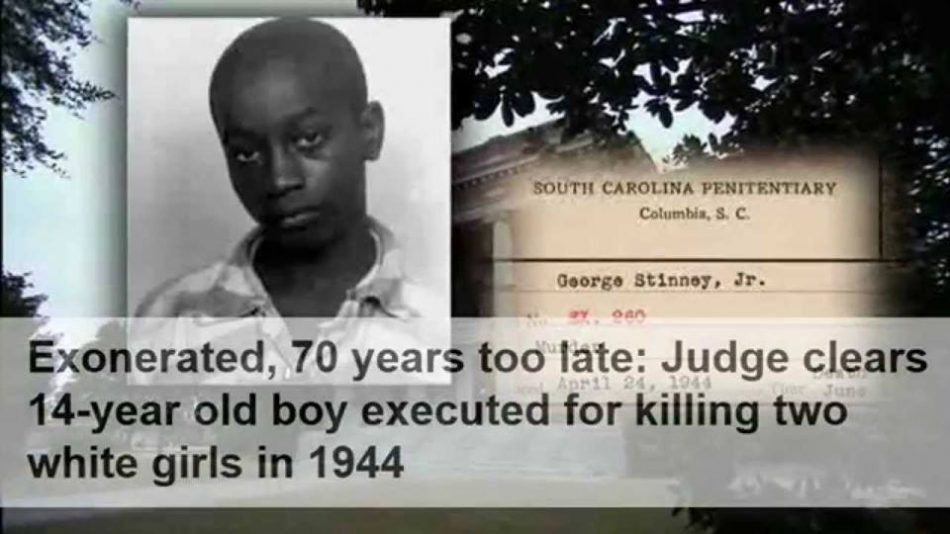
Page Description
Uncover the tragic and unresolved story of George Stinney, the youngest person ever executed in the U.S.
Undying
Undying feelings or beliefs are permanent and never end
He pledged undying love/loyalty.
Cambridge Dictionary
1 Young lawyer dusts off old evidence to cast doubt on George Stinney’s conviction
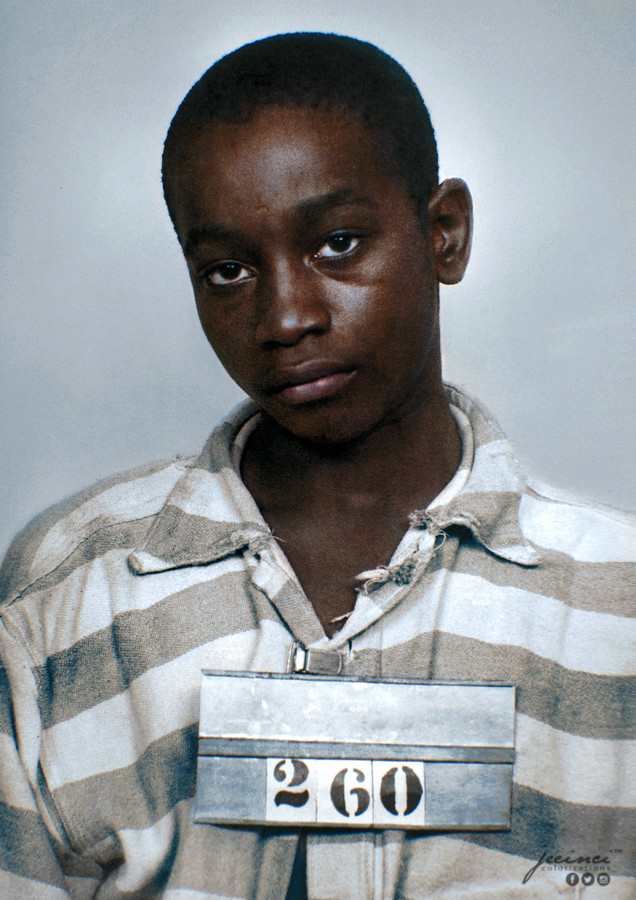
How can a human being inflict so much pain on an innocent child of only 14.
A court hearing of about 3 hours and 10 minutes of treason
by an all-white jury to decide a cruel electrocution
without even the slightest evidence?
George Stinney Jr. was a 14-year-old African-American boy who was executed in South Carolina in 1944 for the murder of two white girls. Here are some key points about his case:
The crime: On March 23, 1944, 11-year-old Betty June Binnicker and 7-year-old Mary Emma Thames were found murdered in a rural area of Alcolu, South Carolina. They had been beaten to death with a railroad spike.
The arrest and trial: George Stinney, who was living in Alcolu with his parents and siblings, was arrested and charged with the girls’ murders. He was interrogated by police without his parents or a lawyer present, and reportedly gave a confession, which he later retracted.
The trial lasted only one day, with an all-white jury and a white judge. Stinney’s court-appointed lawyer did not call any witnesses or present any evidence in his defense. Stinney was found guilty and sentenced to death by electrocution.
There were many irregularities in the trial, including the lack of due process, the coercion of Stinney’s confession, and the failure to adequately investigate other suspects or consider alternative explanations for the girls’ deaths.
Despite widespread protests and appeals for clemency, Stinney was executed just 83 days after the murders, making him the youngest person to be executed in the United States in the 20th century.
In 2014, Stinney’s conviction was posthumously vacated by a South Carolina judge who found that he did not receive a fair trial due to his age, lack of legal representation, and other factors. However, the ruling did not declare Stinney innocent, and his case remains a controversial and tragic example of racial injustice in the American legal system.
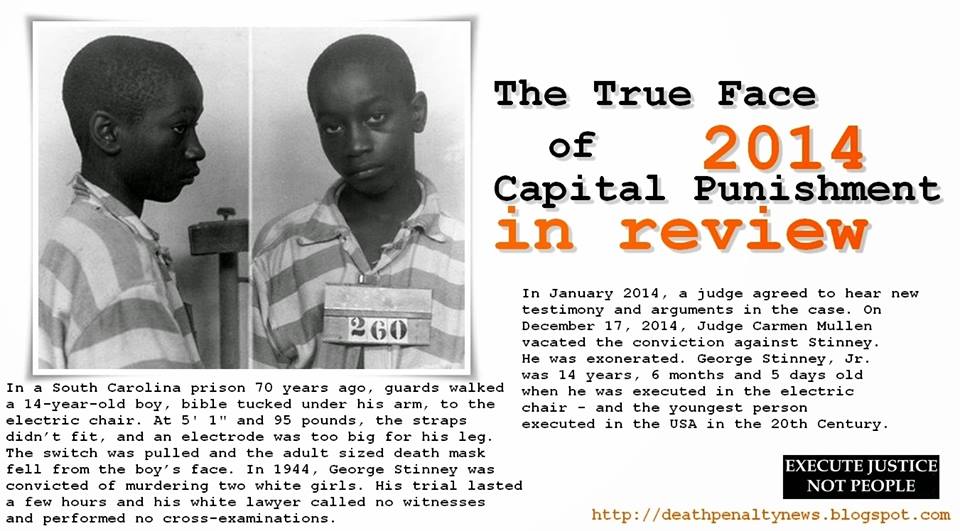
Chilling story of innocent black boy, 14, executed after white jury convicted him in just 10 minutes
George Stinney Jr was killed in South Carolina in 1944 and is the youngest person executed in America during the 20th century
1 June 16, 1944 – George Stinney, Age 14, Executed
16 jun. 2017
2 Teen’s conviction tossed 70 years after his execution
18 dec. 2014
One can hardly imagine how young a child of 14 is,
and then to take his life by a cruel electrocution
on an electric chair for something this child clearly did not do!
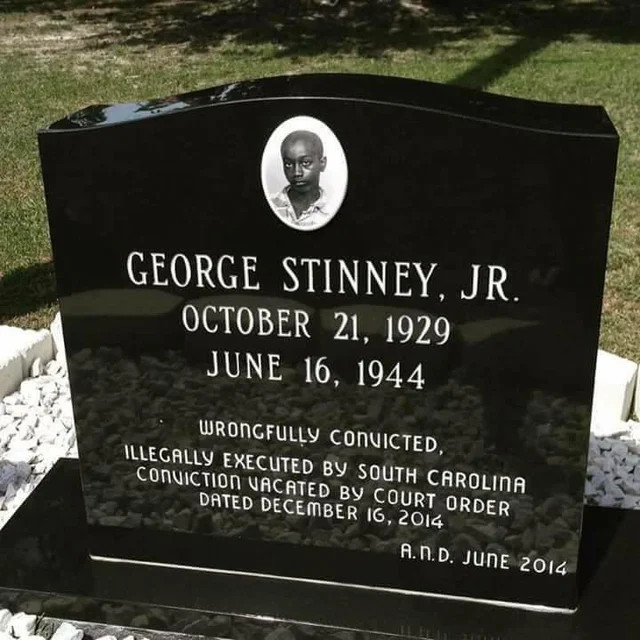
2 How can you lock up completely innocent people in prison?
Notice
- One cannot ignore the fact that the Liam Allan example on the first webpage is merely a fabrication, in which there should never have been a prosecution.
- It is a black and white issue.
- The examples cited on the first webpage are cases where the legal system has failed – for whatever raison – in a way that words cannot describe.
- Justice on the wrong side of the law is a difficult position, causing unbearable pain to innoccent humain beings.
- One example of the broken justice system is explained in the video: “Ryan Ferguson Juror Explains 2004 Murder Conviction“
(about 9 minutes).
Ryan spent his whole twenties innocent behind bars. - Peoples lives have been ruined because they went to jail for years based on fabrications.
Imagine yourself in the shoes of the 19-years-old Ryan in the video to go innocent behind bars for almost a decade.
– – – – – –
The film Dream/Killer about what happened is the definition of “surreal”
There’s outrage to spare in “Dream/Killer,” an injustice documentary from filmmaker Andrew Jenks. A few years after the 2001 murder of a Columbia, Mo., sports editor, a clean-cut 19-year-old named Ryan Ferguson was fingered by an eyewitness, who claimed he saw the crime in a dream. Without any physical evidence, Ferguson was convicted and sentenced to 40 years in prison.
Bemerk
- Men kan er niet omheen dat de casus Liam Allan louter steunt op een verzinsel waarbij nooit vervolging had mogen worden ingesteld.
- Het is zwart-wit.
- Voornoemde voorbeelden zijn gevallen waarin het rechtssysteem heeft gefaald – om welke reden dan ook – op een wijze die met geen pen te beschrijven valt.
- Justitie aan de foute kant van de wet is een moeilijke positie, die ondraaglijke pijn berokkent aan de onschuldige medemens.
- Een voorbeeld van het gebroken rechtssysteem wordt uitgelegd in de video: “Ryan Ferguson Juror Explains 2004 Murder Conviction” (ongeveer 9 minuten).
Ryan bracht zijn twintiger jaren onschuldig achter de tralies door. - Mensenlevens zijn geruïneerd door jarenlang gevangenis op basis van een constructie.
Stel je voor dat je in de schoenen staat van de 19-jarige Ryan in de video om bijna tien jaar onschuldig achter de tralies te verdwijnen.
– – – – – –
De film Dream/Killer over wat er gebeurd is, is de definitie van “surrealistisch”
Er is veel verontwaardiging in “Dream/Killer”, een onrecht documentaire van filmmaker Andrew Jenks. Een paar jaar na de moord op een sportredacteur in Columbia, Mo. in 2001, werd de keurige 19-jarige Ryan Ferguson aangewezen door een ooggetuige, die beweerde dat hij de misdaad in een droom had gezien. Zonder enig fysiek bewijs werd Ferguson veroordeeld tot 40 jaar gevangenisstraf
But in piecing together — thanks to archived interrogation and trial video —
a genuinely awful story of bad cops, corrupt prosecution, incompetent defense and an appeals process marred by the blind upholding of convictions,
Jenks never stirs you to consider how or why any of this happens. (It’s not racism, since everyone in the story is white.)
11 nov. 2015

Ryan W. Ferguson (born October 19, 1984) is an American man who spent nearly 10 years in prison after being wrongfully convicted of a 2001 murder in his hometown of Columbia, Missouri.
At the time of the murder, Ferguson was a 17-year-old high-school student.
Ryan Ferguson spent his whole twenties innocent behind bars…
Another heartbreaking example cited in the list on the first webpage:
3 Many people say: how can Michael Morton be innocent?
He was indicted by a grand jury, he was trialled by a jury of his peers, all the evidence was brought up, he had defence council reference and the jury found him guilty.
Then we had appeals, and other appeals and we had rich files and more appeals and all the judges and all the courts agreed he is guilty.
How could that be that one soul could be innocent after all those procedures? Well you will hear about it tonight.
This is a classic case because it doesn’t include any civil rights issue, particularly on race, it is not a racial issue. All the people involved were Caucasian, some of them were neighbours. You are seeing the best of lawyers represented with Barry Scheck in our audience …
John Raley fought for 5 years for one simple thing: lets DNA test the bandana.
Well in spite of all the procedures to obtain justice, it went completely wrong.
Michael Morton spent 25 years innocent behind bars…
(This is a excerpt of the introduction of a video: Evening With Michael Morton and Barry Scheck)
“A devastating and infuriating book, more astonishing than any legal thriller by John Grisham” (The New York Times) about a young father who spent twenty-five years in prison for a crime he did not commit…and his eventual exoneration and return to life as a free man.
On August 13, 1986, just one day after his thirty-second birthday, Michael Morton went to work at his usual time. By the end of the day, his wife Christine had been savagely bludgeoned to death in the couple’s bed—and the Williamson County Sherriff’s office in Texas wasted no time in pinning her murder on Michael, despite an absolute lack of physical evidence. Michael was swiftly sentenced to life in prison for a crime he had not committed. He mourned his wife from a prison cell. He lost all contact with their son. Life, as he knew it, was over.
Drawing on his recollections, court transcripts, and more than 1,000 pages of personal journals he wrote in prison, Michael recounts the hidden police reports about an unidentified van parked near his house that were never pursued; the bandana with the killer’s DNA on it, that was never introduced in court; the call from a neighboring county reporting the attempted use of his wife’s credit card, which was never followed up on; and ultimately, how he battled his way through the darkness to become a free man once again.
“Even for readers who may feel practically jaded about stories of injustice in Texas—even those who followed this case closely in the press—could do themselves a favor by picking up Michael Morton’s new memoir…It is extremely well-written [and] insightful” (The Austin Chronicle). Getting Life is an extraordinary story of unfathomable tragedy, grave injustice, and the strength and courage it takes to find forgiveness
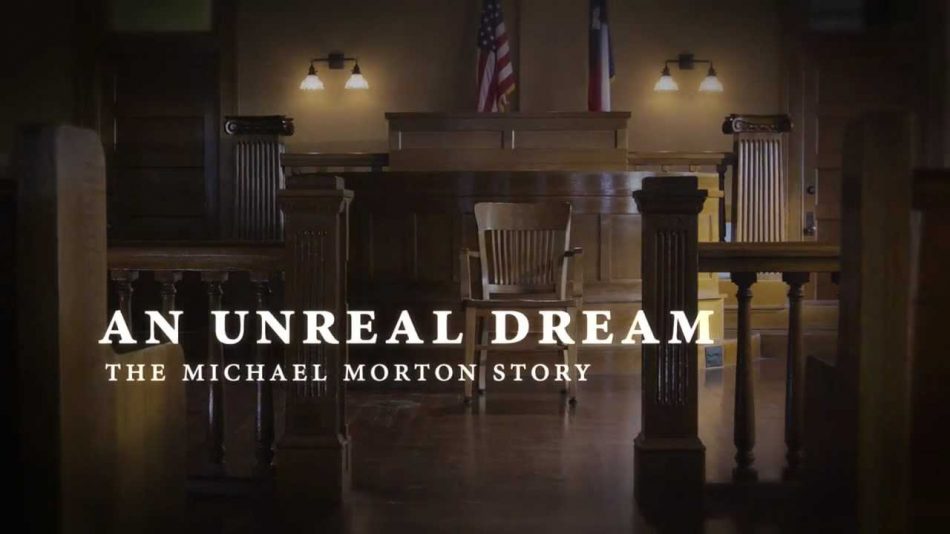
Michael Morton, author of “Getting Life,” is the first cited in the list above.
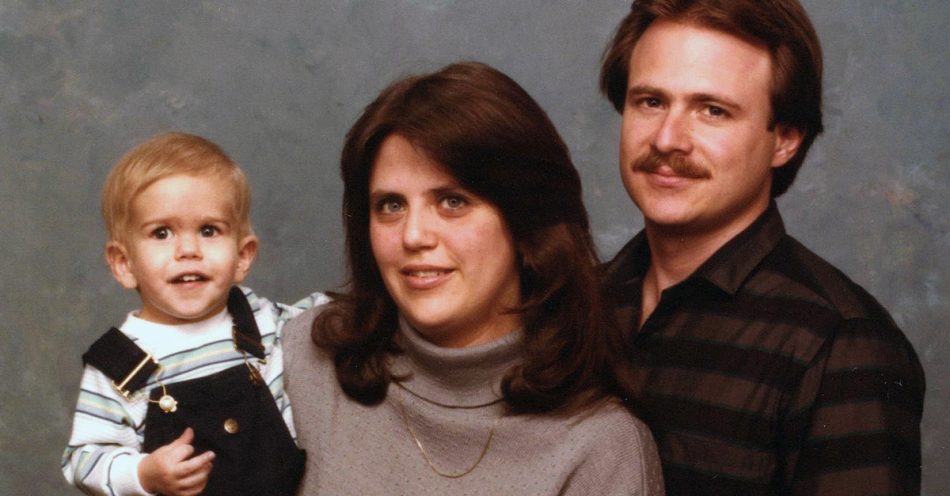
Getting Life: An Innocent Man’s 25-Year Journey from Prison to Peace
4 AN UNREAL DREAM: THE MICHAEL MORTON STORY – Official Trailer
2 dec. 2013
For more information visit: www.firstrunfeatures.com/unrealdreamdvd
In 1986 Michael Morton’s wife Christine is brutally murdered in front of their only child, and Michael is convicted of the crime. Locked away in Texas prisons for a quarter century, estranged from his son, he has years to ponder questions of justice and innocence, truth and fate. Though he is virtually invisible to society, the Innocence Project and Michael’s pro bono attorney spend years fighting for the right to test DNA evidence found at the murder scene. Their discoveries ultimately reveal that the price of a wrongful conviction goes well beyond one man’s loss of freedom.
Director Al Reinert is a two-time Academy Award nominee, as a documentary filmmaker (For All Mankind, which won the documentary Jury and Audience Awards when it premiered at the Sundance Film Festival in 1989) and as a screenwriter (Apollo 13).
AUDIENCE AWARD WINNER, DOCUMENTARY SPOTLIGHT- SXSW 2013
“A powerful story of pain, injustice, redemption, and reconciliation.” – Huffington Post
“Recounts an outrageous miscarriage of justice without a trace of manufactured melodrama or visual hyperbole. The film’s rivetingly straightforward style of storytelling is a perfect match for its subject. An inspiring tale of spiritual uplift, sympathetically detailing how religious faith gave Morton the strength to endure, and the mercy to forgive.” – Variety
“An unflinching look at how Morton was wrongfully convicted of murder and had his only son disown him.”- Associated Press
“Makes very real an innocent man’s nightmare through a cruel and broken justice system that stole his freedom, his relationship with his son and, nearly, his spirit.”- Houston Chronicle
“A gripping saga. What is most frightening is how much effort and time it took a squad of highly motivated, expert lawyers to claw Morton out of prison, even after the truth became widely apparent. If a respected, responsible citizen like Morton can be thrown in prison for decades based on such a feeble case, the film asks, who among the rest of us can consider ourselves safe?”- PopMatters
“An extraordinary film…ultimately a story of transcendence.”- Austin American Statesman
“Morton’s character fills this all-too-familiar story of injustice and absolution with a uniquely generous, moving spirit.”- Austin Chronicle
5 Juror who convicted Morton feels guilty
5 okt. 2011
The Michael Morton story is injustice by design.
The jury received wrong information to frame Michael as the murderer in spite the prosecutor knew he was not.
It is the wild west of a unthinkable cruel, heinous justice system.
A clear injustice in a broken system.
It is what happened to Liam Allan and the other persons in the list above.
Listen to the juror who convicted Michael Morton in the video.
The disgraced prosecutor Ken Anderson was
the con man in the justice system.
Con: To make someone believe something false, usually so that that person will give you their money or possessions (Cambridge Dictionary).

Prosecutorial misconduct can be so difficult to detect because
when a prosecutor deliberately hides evidence of innocence from the defense, that evidence is intended to stay hidden, and too often does.
4 Justice is a pretty sobering experience!
Consider an innocent person can be framed with something he has absolutely no involvement with!
The Michael Morton case illustrates how dependent the criminal justice system is on honesty from the police and prosecutors and how easy people trust the police and prosecutors.
The false conviction of Michael Morton occurred not only because of corrupt law enforcement but due to a jury that was easily manipulated.
This case illustrates how easy it is to be falsely convicted.
How almost anything a person does can be distorted into a malicious narrative.
The negative theme is easier to believe when there isn’t a lot of evidence of an alternate theory of the crime.
In this case that evidence was available, but it wasn’t shared with the defence.
The other incredible part of this case is the resilience of Michael Morton. A man who was 100 percent innocent and suffered for over 24 years in prison. He lost everything: his wife, contact with his son, his freedom, people hated him, they wouldn’t talk to him, he was isolated. People wanted him to confess to something he did not do. I think it’s a reminder that prison is a devastating punishment.
Prisoners who maintain their innocence should always have their claims seriously considered. They in a position where it’s very hard to undo what’s been done to them. That if they’ve been falsely convicted, it’s really a difficult road to travel to get that reversed.
A kind corrupt law enforcement as in the Michael Morton case
- Several dozens of innocent persons named on a few web pages were for no reason unscrupulously punished just as a result of a broken justice system.
——
- When you go down the names one by one in the lists, it is the same pattern of what Liam Allan, Ryan Ferguson and Michael Morton had to endure.
——
- The parallel in all the cases cited: justice was intellectually inadequates as expressed by prosecutor Jerry Hayes (“sheer incompetence”)
You can’t do harm without knowing that you’re hurting someone a lot.
Imagine…
There is no honesty…
No Shame…
No Conscience…
Something is not right

Looking for nails at low tide.
Looking for trifles which are almost impossible to find.
Justice is beating around the bush,
convicting innocent people without any reason, cause or justification.
Spijkers op laag water zoeken.
Op zoek naar kleinigheden die bijna onmogelijk te vinden zijn.
Justitie slaat wild om zich heen,
om zonder aanleiding, oorzaak of reden onschuldigen te kunnen veroordelen.
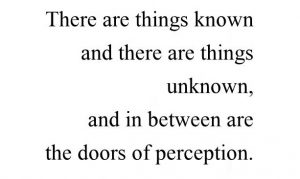
Three examples and the numerous examples on the first webpage are cases of a clear flawed justice system.
Notice
- In the interrogation Ryan Ferguson says: “I am even innocent of being there!”
- The alleged witness Trump could not have seen Ryan Ferguson from where he was!
- The second witness, Erikson, had been used by the police to make a false statement.
- There was no indication that Ryan had anything to do with it and both witnesses later stated that they had both lied.
- It is an aberration unimaginable that it is possible, on the basis of nothing, to be manipulated as a 19 year old to end up in prison for 10 years and the chances of getting out are virtually non-existent.
- Ryan had a bad lawyer. He bears full responsibility for Ryan not receiving a fair and dignified trial and thus being unjustly jailed for 10 years.
5 The Scottsboro Boys (1931)
- Ditto for the 9 Scottsborro boys They were not all present in this train carriage.
- This seems to be a Candid Camera type of justice event, that results in years of innocent imprisonment.
- Ryan Ferguson said: “it takes an army to get out of prison”.
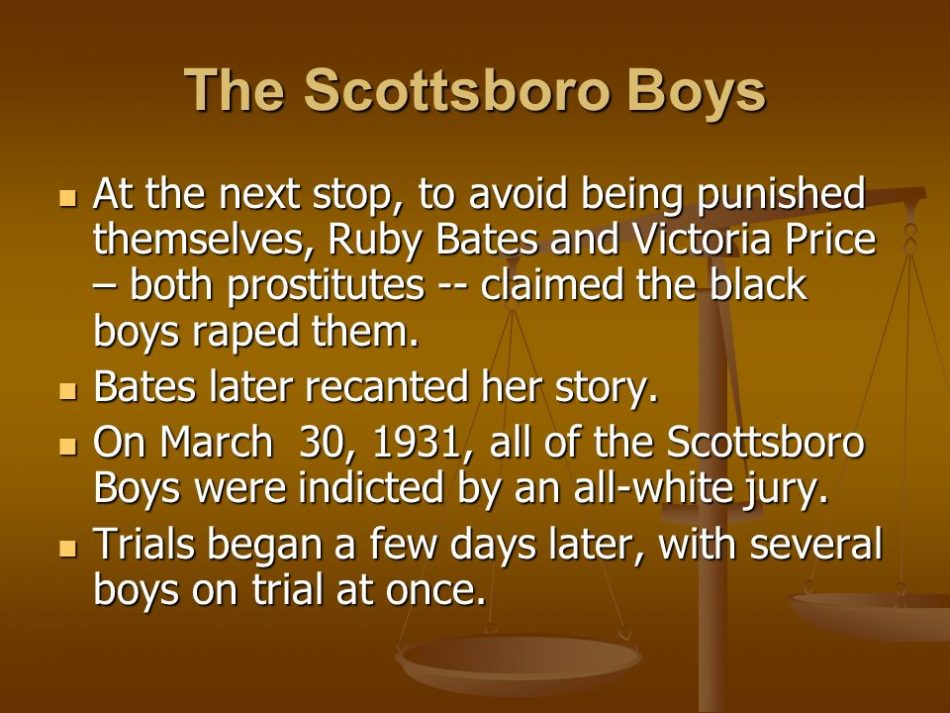
Convicted of rape and sentenced to death (the common sentence in Alabama at the time for black men convicted of raping white women),
even though there was no medical evidence indicating that rape had taken place.
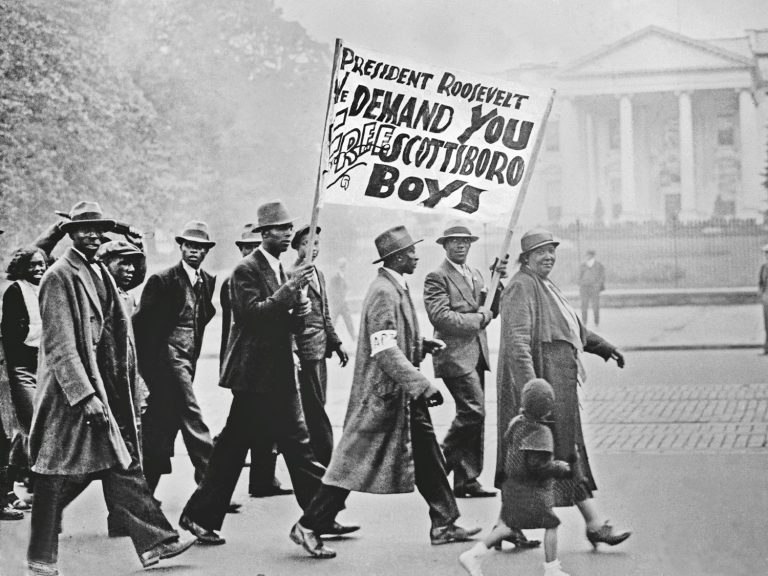
Nine African American teenagers, ages 13 to 20, accused in Alabama of raping two white women in 1931
The Scottsboro Boys were a group of nine black teenagers who were falsely accused of raping two white women on a train in Alabama in 1931. The case became a cause célèbre and is widely regarded as a significant moment in the civil rights movement in the United States.
Here are some key points about the case:
The Scottsboro Boys were accused of raping two white women on a train traveling from Tennessee to Alabama in 1931. The women accused the boys of rape, but there was little evidence to support their claims.
The boys were quickly tried and convicted, with some receiving death sentences. Their trials were marked by racism and incompetence on the part of the legal system.
The case was appealed multiple times, with some of the boys being retried and reconvicted. However, their sentences were eventually reduced or overturned.
The case drew national attention, with many civil rights activists and organizations advocating for the boys’ release. The case also highlighted the racism and discrimination that black people faced in the South.
The Scottsboro Boys case ultimately led to changes in the way that the legal system dealt with cases involving black defendants. It also contributed to the broader civil rights movement in the United States.
6 The Central Park Five (1989)
- Following on from the Scottsborry boys are ‘The Central Park Five’,
- 5 boys of only 14, 15 and 16 years of age, in 1998, who were fabricated and locked up in prison for 7 and more years.
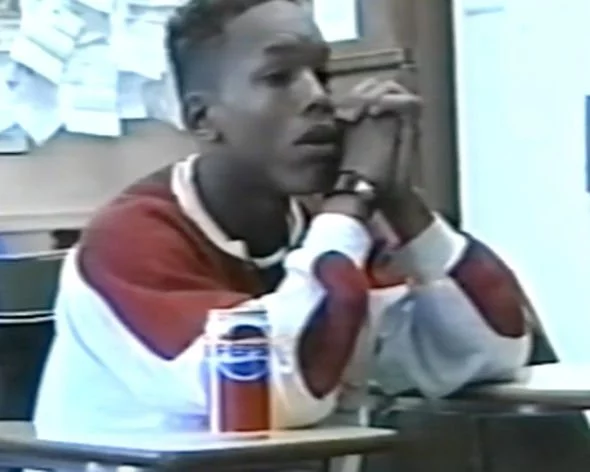
Korey Wise
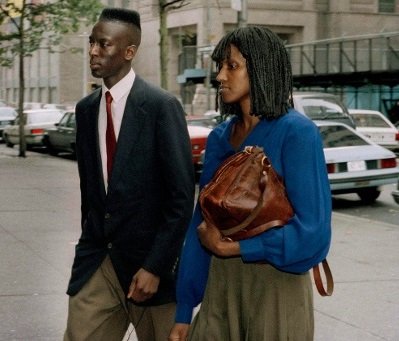
Yusef Salaam
Five black and Latino youths from Harlem were wrongly convicted of raping a white woman in Central Park, New York, in 1989.
On 20 April 1989, Tricia Meili was found in Central Park, severely beaten. She had been jogging and was molested and raped.
A few days later, Antron McCray, Kevin Richardson, Raymond Santana, Korey Wise and Yusef Salaam confessed to the crime after being heavily interrogated. They were convicted and went behind bars for 6 to 13 years.
Only later did a serial rapist confess to assaulting the woman. DNA tests confirmed his confession.
7 Thomas Raynard James (2022)
- Innocent 32 years in prison on the basis of one eyewitness who says afterwards that she was mistaken. Free on 27 April 2022. Same pattern as previously mentioned 19-year-old Ryan Ferguson who spent his entire twenties innocently in prison. Misguided Justice
- Serving the idea of justice with the blunt axe in a fragile and breakable justice system is a very unfortunate way of working, which often goes wrong, as the examples of miscarriages of justice in the website make clear.
- Just one particularly weak statement cannot be used as a basis for locking someone up for 32 years.
- This is clearly a flawed justice system.
- An innocent person is released from prison after years, after decades in prison… and according to what Ryan Ferguson said: “it takes an army to get out of prison” of course this is only the tip of the iceberg.
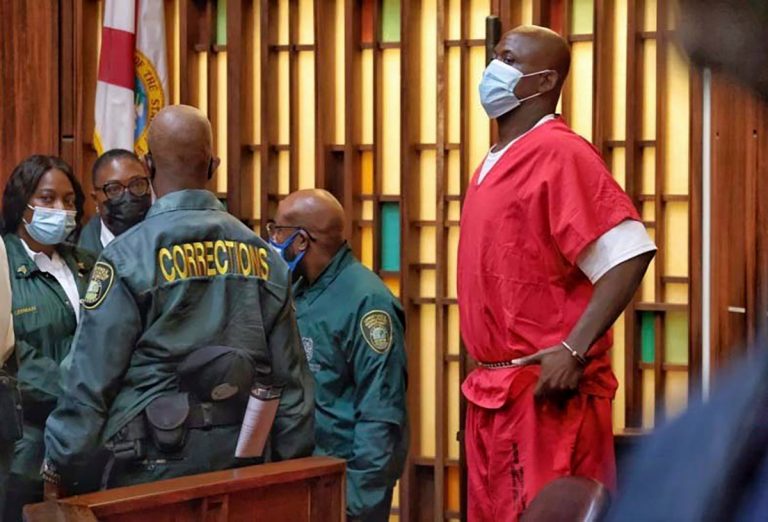
Innocent American man out of jail after 31 years, namesake would be perpetrator
8 Ethics Lessons Learned in the Duke Lacrosse Case (2006)
- The Duke lacrosse case was a widely reported 2006 criminal case in Durham, North Carolina, United States in which three members of the Duke University men’s lacrosse team were falsely accused of rape. Ethics Lessons Learned in the Duke Lacrosse Case
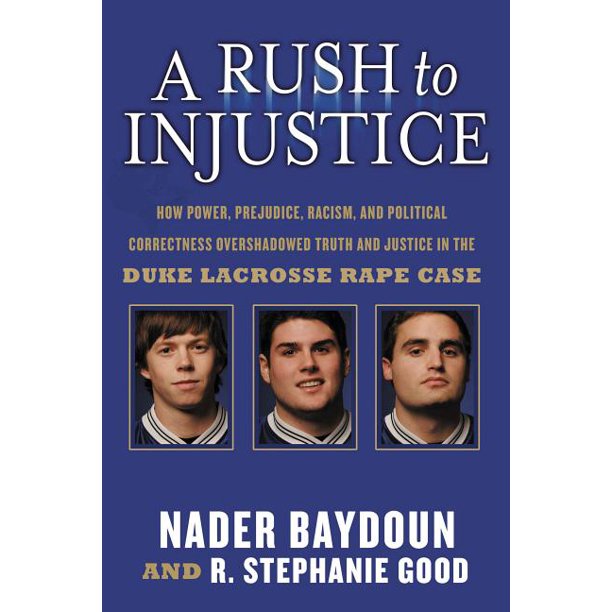
2006 March 28
Duke University officials suspend the men’s lacrosse team for two games following allegations that team members sexually assaulted a stripper hired to perform at a party. Three players were later charged with rape.
The case became a national scandal, impacted by issues of race, politics and class.
In April 2007, all charges against the young men were dropped due to lack of credible evidence and the district attorney was eventually disbarred for his mishandling of the case.
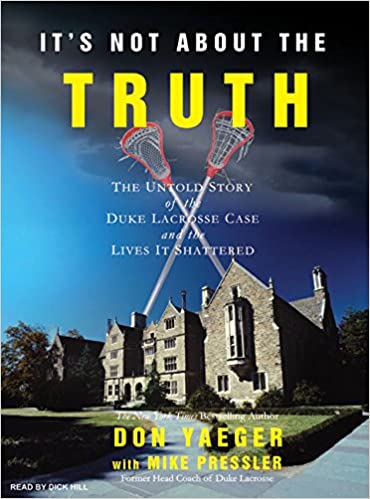
The Duke Lacrosse Case was a highly publicized criminal investigation and trial that began in 2006 and involved members of the Duke University men’s lacrosse team who were accused of raping a woman who had been hired to perform as a stripper at a team party. The case generated widespread media coverage and sparked intense debate over issues of race, class, and the criminal justice system.
Here are some key points of the Duke Lacrosse Case:
In March 2006, a woman hired to perform as a stripper at a Duke University lacrosse team party alleged that she was sexually assaulted by several members of the team.
The allegations sparked a firestorm of media attention and public outcry, with many people assuming the guilt of the accused players before all the facts were known.
The Duke lacrosse players were initially suspended from the team and faced expulsion from the university.
The case was taken up by Durham District Attorney Mike Nifong, who was accused of mishandling the investigation and of making inflammatory statements to the media.
DNA evidence collected from the scene did not match any of the accused players, and the alleged victim’s story began to unravel under cross-examination.
In April 2007, Nifong dropped all charges against the players, and the North Carolina State Bar later disbarred him for unethical conduct.
The Duke Lacrosse Case is now widely regarded as a cautionary tale about the dangers of rushing to judgment and the importance of due process and fair trials.
9 The Post Office Wrongful Convictions Scandal
The Post Office wrongful convictions scandal refers to a case in the United Kingdom where hundreds of sub-postmasters and sub-postmistresses were wrongly accused and convicted of fraud, theft and false accounting between 2000 and 2014. The key points of the scandal are:
The Post Office introduced a new computer system called Horizon in 1999, which was used to manage financial transactions in post offices.
The Horizon system was plagued with technical problems, which resulted in discrepancies and errors in accounting records, leading to shortfalls in postmasters’ accounts.
The Post Office failed to investigate the technical issues and instead blamed the postmasters, accusing them of fraud, theft and false accounting.
The Post Office pursued legal action against the postmasters, resulting in some of them being jailed, losing their jobs, and incurring significant financial losses.
In 2019, the Court of Appeal ruled that the Horizon system was not fit for purpose and had caused “enormous hardship” to the affected postmasters.
The scandal led to a government inquiry, which found that the Post Office had shown “institutional obstinacy” in dealing with the issue and had failed to act on warnings about the Horizon system’s technical problems.
The Post Office subsequently agreed to pay £57.75 million in compensation to more than 2,400 postmasters affected by the scandal.
The scandal has raised questions about the accountability of public institutions, the use of technology in public services, and the treatment of whistleblowers.
More than 700 people were wrongly accused of theft,
fraud and false accounting due to a flaw in a computer system,
between 2000 and 2014.
6 Public inquiry into Post Office scandal starts
14 feb. 2022
7 Post Office scandal: Subpostmistress falsely convicted wants ‘someone to be accountable’
The examples in the website are the result of an error in the justice system.
A kind of so-called justice.
Injustice untouchable and above reproach.
An unimaginable paradox.
Justice derails.
An Undying Mystery.
The lives of completely innocent people
are destroyed,
for no reason or cause!
This kind of justice is a form of ‘Modern Day Slavery’.
The examples cited are patently clear.
What is happening is illegal, senseless, deranged and irreversible.
10 For the record: a wrong investigation
8 The Interrogation Room – The Reid Technique – the fifth estate
22 nov. 2014
9 Interview with Ken Burns, Yusef Salaam, Raymond Santana – Monadnock International Film Festival
10 apr. 2013
It is incomprehensible that in spite of clear data, judgements are made in the courts that do not apply to the person.
It is a justice system that did not function.
It is incomprehensible that in a large-scale event – e.g. The Post Office Wrongful Convictions Scandal – justice can be so easily abused and that justice makes possible what is contrary to common sense. It is not according to law and reason.
You can compare it to Diederik Stapel’s science fraud (part 2 of the website) at three universities for so many long years or Bernie Maddoff’s gigantic fraud of 65 billion. Trust is a paradox, isn’t it?
Two clear examples of a 100% fictional happening.
It comes down to the fact that within the entities of justice there are people without conscience who deliberately make strange leaps to crush people.
In other words, justice is deliberately used with evil intentions and it succeeds effortlessly.
Police ‘institutionally corrupt’ according to report into 1987 death of Daniel Morgan
Het is niet te begrijpen dat ondanks duidelijke gegevens er bij justitie vonnissen worden geveld die niet van toepassing zijn op de persoon.
Het is een justitie systeem die niet heeft gefunctioneerd.
Het is niet te begrijpen dat in een grootschalig gebeuren – voorbeeld The Post Office Wrongful Convictions Scandal – justitie zo makkelijk kan misbruikt worden en dat justitie mogelijk maakt wat in strijdt is met het gezond verstand. Het is niet volgens recht en redelijkheid.
Je kunt het vergelijken met de wetenschapsfraude van Diederik Stapel (deel 2 van de website) aan drie universiteiten gedurende zovele lange jaren of de gigantische fraude van Bernie Maddoff van 65 miljard. Trust is a paradox, isn’t it?
Twee duidelijke voorbeelden van een 100% fictief gebeuren.
Het komt erop neer dat binnen de entiteiten van justitie er mensen zijn zonder geweten die bewust rare sprongen maken om mensen te verbrijzelen.
Met andere woorden justitie wordt bewust met kwade bedoelingen gebruikt en dit lukt moeiteloos.
The phrase “An Undying Mystery” is an expression that can be interpreted in different ways depending on the context in which it is used. Here are some possible key points or interpretations:
Perpetual Mystery: “Undying” could refer to something that persists or remains unresolved despite efforts to solve or understand it. It could imply that the mystery in question continues to endure or persist over time, resisting attempts to fully comprehend or explain it.
Enduring Enigma: “Undying Mystery” might suggest that the mystery in question is longstanding and has not been solved or revealed despite prolonged investigation or scrutiny. It may convey a sense of enduring intrigue or fascination, and could be used to describe a puzzling or enigmatic phenomenon that has persisted over time.
Unfading Intrigue: “Undying” could also imply that the mystery is timeless, and continues to captivate or intrigue people indefinitely. It may suggest that the mystery retains its allure and fascination, never losing its appeal or interest despite the passage of time.
Eternal Unknown: “Undying Mystery” could evoke a sense of eternal or infinite mystery that is beyond human comprehension, implying that it may never be fully understood or explained. It could refer to a profound or metaphysical mystery that transcends human understanding, such as the mysteries of the universe, consciousness, or existence itself.
Symbolic Meaning: “Undying Mystery” could also be used metaphorically to describe a situation or concept that remains puzzling or unresolved, even if it is not necessarily a literal mystery. It may convey a sense of ongoing curiosity, wonder, or intrigue about a particular subject or topic.
It’s important to note that the interpretation of “An Undying Mystery” can vary depending on the context in which it is used, and the intended meaning may differ based on the speaker or writer’s perspective or intention.
A Candid Camera-like justice event as we see, in de candid camera video below: Worst Police Dog Ever.
Please enjoy.
10 Throwback Thursday – Worst Police Dog Ever!